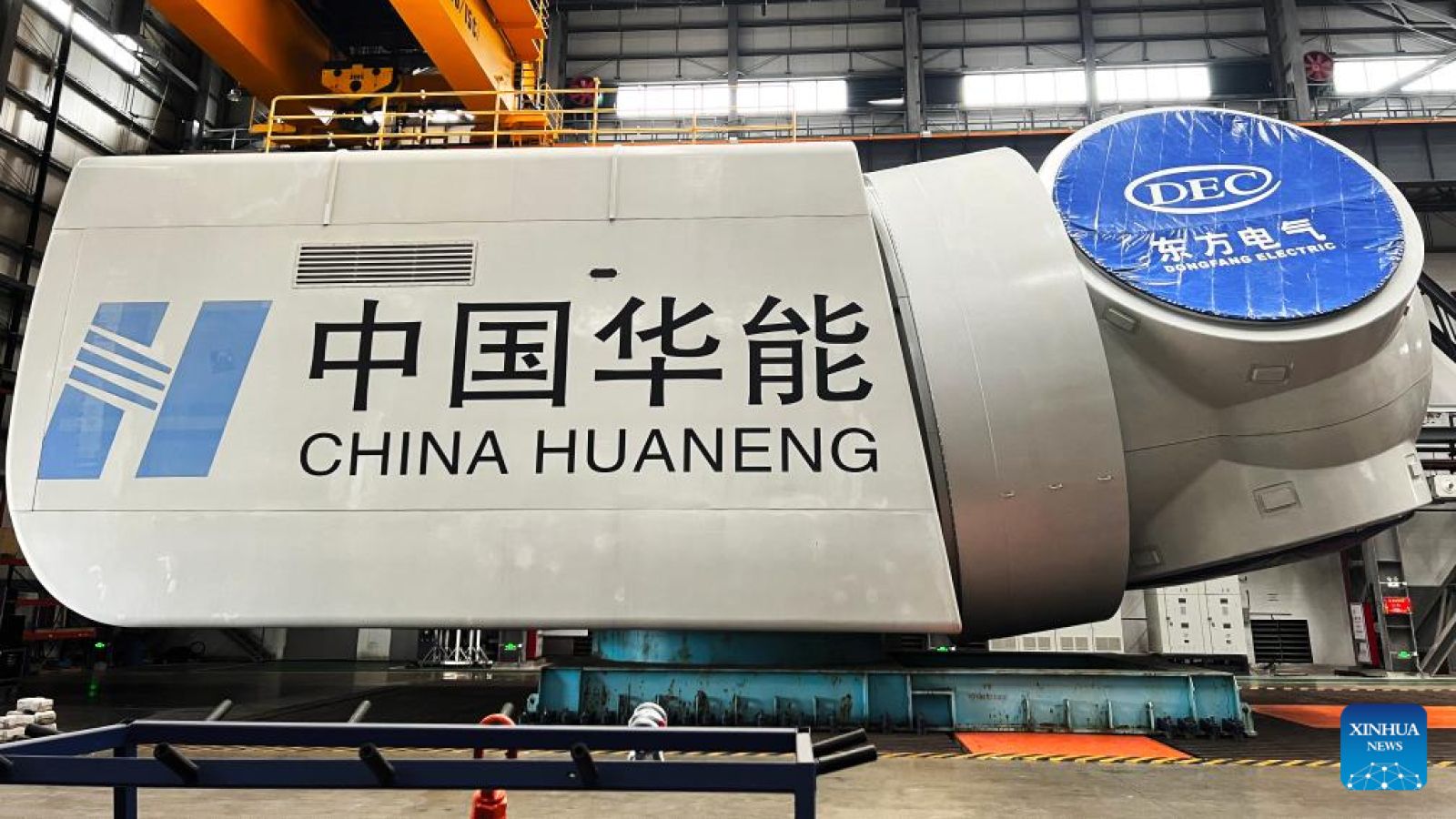Follow us on Google News (click on ☆)
This turbine, the result of a collaboration between China Huaneng Group and Dongfang Electric Corporation, can produce 17 megawatts. Such performance could power the equivalent of 6,300 American households for a year, according to US Energy Administration data.

Generator of the wind turbine prototype.
Credit: China Huaneng Group/Handout via Xinhua
The innovative design of this turbine includes a nacelle perched at a height of 152 meters (500 feet), with blades covering an area equivalent to eight football fields. This configuration maximizes wind capture, thereby increasing energy efficiency.
Planned sea trials off the coast of Yangjiang will be crucial to validate its resistance to extreme conditions. The designers claim it can withstand waves over 24 meters (80 feet) high and typhoon-force winds.
The adoption of such floating wind turbines could significantly reduce the number of units needed in wind farms, thereby lowering costs and environmental impact. This technology also paves the way for exploiting previously inaccessible maritime zones.
How does a floating wind turbine generate electricity?
A floating wind turbine operates on the same principle as a land-based turbine, but it is anchored to the seabed by cables rather than a fixed foundation. The blades capture wind energy, which spins a generator located in the nacelle.
The unique feature of floating wind turbines lies in their ability to be installed in deep waters, where winds are stronger and more consistent. This increases their efficiency compared to land-based or fixed offshore turbines.
The flotation technologies used vary but often include semi-submersible or tension-anchored platforms. These designs allow the turbine to remain stable despite sea movements.
Why are floating wind turbines important for the future of energy?
Floating wind turbines represent a major breakthrough for renewable energy, as they enable the exploitation of previously inaccessible maritime zones. Approximately 80% of offshore wind potential is located in waters too deep for fixed turbines.
By reducing the need for fixed infrastructure, they also minimize the impact on marine ecosystems. Moreover, their installation is less costly and faster once the technology is mastered.
They offer a solution for countries with limited land space or deep waters, such as Japan or Norway. These nations can thus diversify their renewable energy sources.
In the long term, floating wind turbines could play a significant role in the global energy transition by providing a clean and abundant energy source.